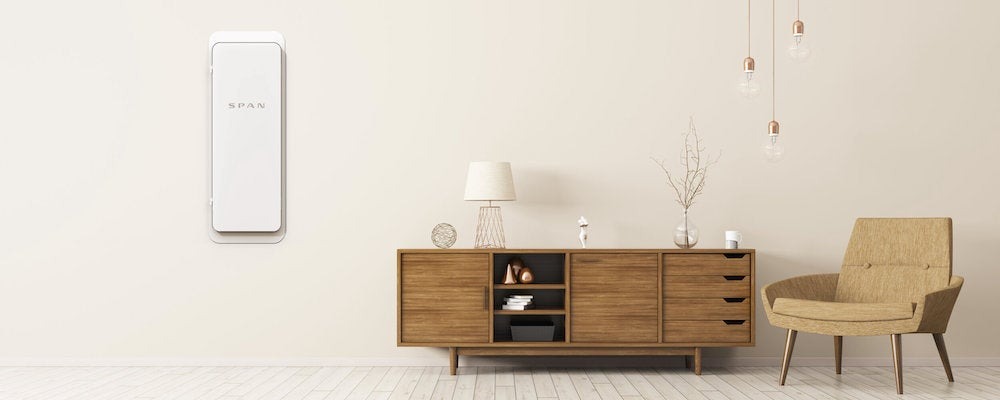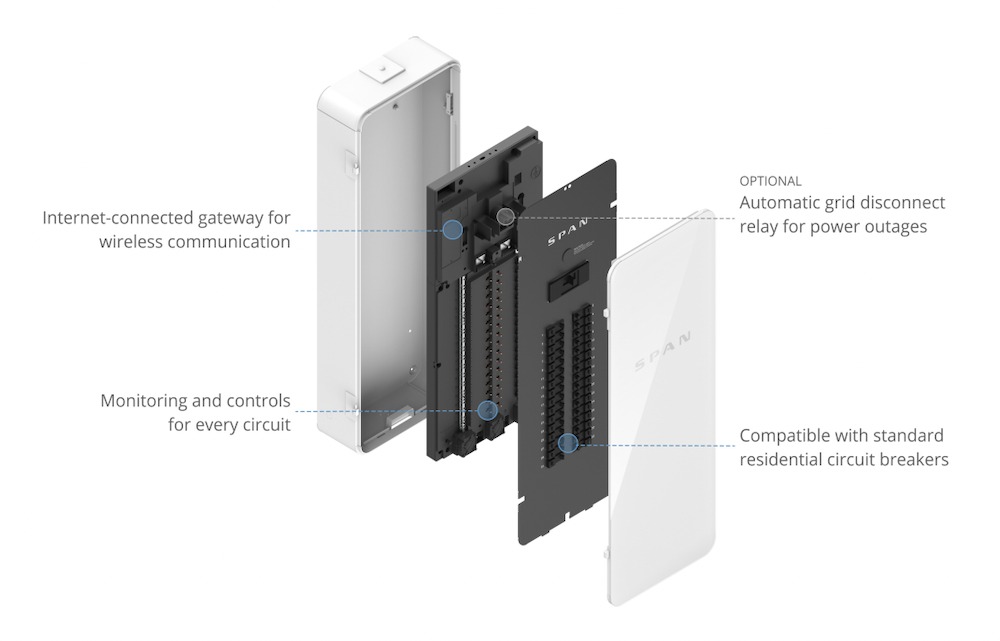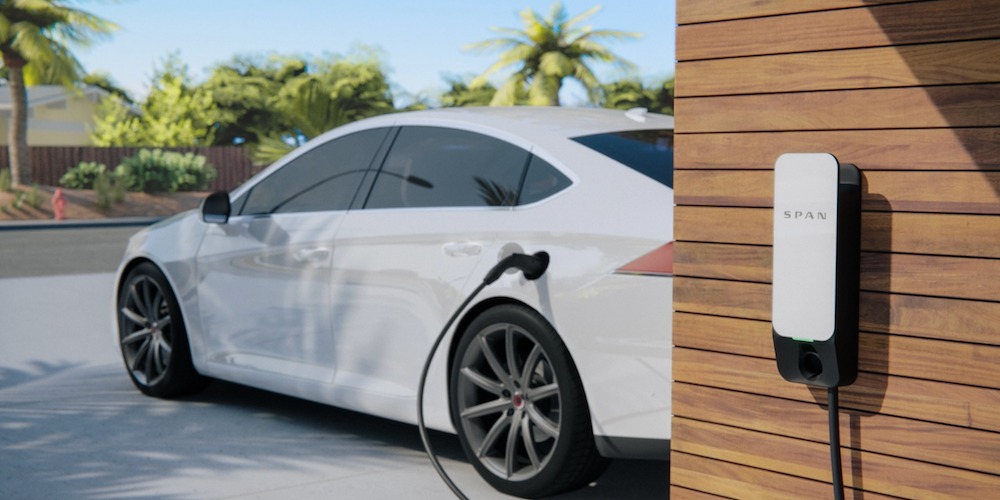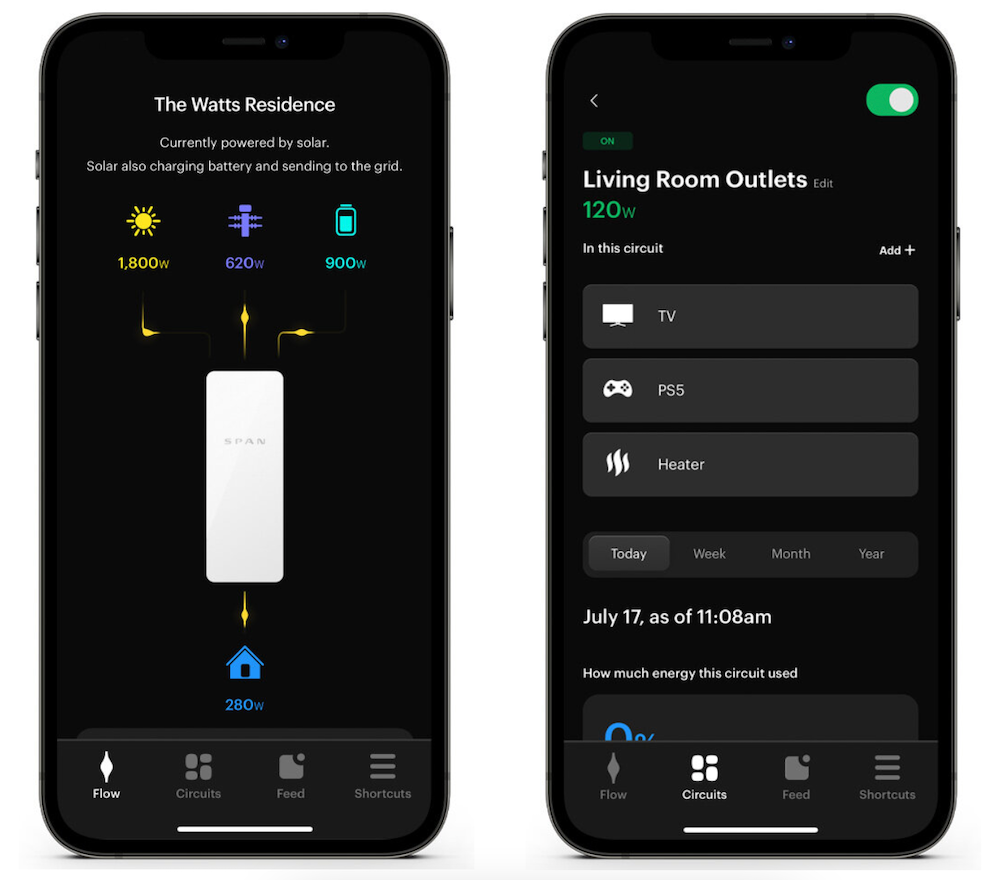Updated 8 months ago
SPAN Panel Overview: The Key to Smart Energy in Your Home
Written by
Ben Zientara

Find out what solar panels cost in your area
Most people probably don’t think about their electrical panel unless something goes wrong. But a modern smart electrical panel can become the hub for everything electrical inside your home, unlocking a plethora of energy savings and power management.
The SPAN electrical panel is the most successful modern smart panel on the market. It allows you to:
Monitor your electricity usage in real-time
Easily control individual circuits
Set up automation to turn certain circuits on and off at specific times
Prioritize certain circuits to save money when electricity prices are expensive
Interface with a solar battery
As for cost, the SPAN panel retails for $3,500, and qualifies for a $600 tax credit. Let’s look closer at all this new smart home energy hub can do.
Key takeaways
-
The SPAN Panel is a smart electrical panel that allows you to monitor and control all the electrical circuits in your home.
-
SPAN Panels are rated for 200-amp service, compatible with circuit breakers from major manufacturers, and any licensed electrician can service the circuits inside.
-
A SPAN Panel costs $3,500 before installation, compared to the $300 cost of a traditional electrical panel.
-
Buying a SPAN Panel qualifies a homeowner for a tax credit of 30% (up to $600) through the residential clean energy tax credit.
-
SPAN accepts input from any grid-tied solar inverter and integrates with the SPAN Drive EV charger and solar batteries from Tesla, SolarEdge, Enphase, and FranklinWH.
-
SPAN users love the smart features of the panel, but there are drawbacks, such as a maximum of 200 amp service per panel and the high initial cost.
What is the SPAN smart electrical panel?

SPAN Panel. Image source: SPAN
The SPAN Panel is an electrical panel, just like the ones found in homes across the USA. The wires inside are connected to your home just like any electrical panel and can be serviced by any electrician. It uses the same circuit breakers from major manufacturers like Eaton and Square D and can handle up to 200-amp service from the utility.
However, the SPAN Panel is also different from an ordinary electrical panel. It has a smart computer connected to all of the circuits in your home and works with the SPAN app, which allows you to:
Monitor your electricity usage in real-time
Easily control individual circuits
Set up automation to turn certain circuits on and off at specific times
Prioritize certain circuits to save money when electricity prices are high
Dynamically control EV charging speed based on factors like available solar power and time-of-use rates
Interface with a solar battery and selectively deactivate circuits based on available backup power in a power outage
How much does the SPAN panel cost?
The SPAN electrical panel costs $3,500 before installation, taxes, and shipping. By comparison, the cost of a traditional 200-amp electrical panel is between $300 to $400.
A SPAN-certified installer is necessary to perform the panel's initial setup. Installation costs vary widely by region, installation company, and the difficulty of performing the main panel upgrade. We’ve seen installation costs as low as $2,000 and as high as $15,000.
Once the initial installation and commissioning is complete, any licensed electrician can add or modify circuits inside the SPAN Panel.
Benefits of using the SPAN electrical panel at home
The extra cost of the SPAN Panel is quite high, but many benefits come with it, including:
Circuit-level monitoring to identify appliances and devices that are malfunctioning and drawing too much power
Manually and automatically controlling circuits to reduce energy usage during times of peak grid demand
Because it can limit total instantaneous power draw, installing a SPAN Panel can prevent a homeowner from paying for a service upgrade
Controlling power flow to the SPAN Drive EV charger based on your needs (e.g., limiting the charging speed to only use available excess solar power)
Integrating with solar panels and home solar battery systems for daily charging and surviving a power outage.
Smart energy monitoring using the SPAN app
The SPAN Panel has a built-in Wi-Fi gateway, ethernet connection, and backup 4G/LTE connectivity, allowing you to connect the system to your home network and control it with the SPAN home app. The app serves as your main method of communication and control for the SPAN Panel. Using the app, you can view how much power your appliances and equipment are consuming in real-time. These features are similar to power tracking systems available on the market today, like the Sense smart home energy monitor.
One of the most unique features of the SPAN system is the ability to turn on and off specific circuits around your home with the app. For example, if you accidentally leave an iron plugged in, you can turn off the circuit, powering the device from the app, even when you’re not home. The SPAN Panel also works with Amazon Alexa for voice-activated controls.
SPAN Drive for electric vehicle charging

SPAN Drive. Image source: SPAN
The SPAN Drive electric vehicle charger works seamlessly with the SPAN home electrical panel to provide customized EV charging. When connected to the SPAN Panel, the SPAN Drive can provide Level 2 charging even if your home can’t meet the power requirements for a Level 2 charger. It does this by prioritizing power delivery to the charger over appliances at home. SPAN Drive can also slow down the charging rate when you’re running numerous devices or appliances based on the priority you can set in the app.
The SPAN Drive includes a J1772 connector that works with any electric vehicle manufactured in the U.S. (requires an adapter for Tesla/NACS).
SPAN Drive also works alongside solar panels and can be set to charge your car using only the solar power available at any given time. If you have a solar battery, you can also charge your electric vehicle during a power outage by prioritizing the charger via the SPAN mobile app.
The SPAN Drive costs $750 before shipping and installation. This product will be officially available this summer.
How to save money on energy costs with a SPAN Panel
There are numerous ways to save money on your energy bills with the SPAN Panel. You can decrease usage by deactivating unnecessary circuits, shifting loads to off-peak usage hours, and maximizing your solar power and battery storage usage.
Decrease phantom loads
With energy usage monitoring in the app, you can monitor idle appliances or devices consuming power. These are called phantom loads, which account for 10 to 20% of your monthly electricity bill. Idle phone chargers plugged into outlets and printers with always-on digital displays are common systems that contribute to phantom loads.
Someone whose monthly electricity bill is $200 could save $20 to $40 by cutting off phantom loads from within the SPAN app. That’s $240 to $480 per year in savings.
Load shifting with time of use rates
The SPAN app highlights equipment that uses unusually large amounts of power, such as ovens, refrigerators, water heaters, and more. In addition to identifying these power-hungry systems, you can turn off the circuit during times of the day with peak electricity rates and turn them on at night when electricity rates are lower. SPAN Drive can also shift when your electric car charges to off-peak hours when electricity rates are low.
Battery and solar control
On top of savings from energy generated by your solar panels, you can set priorities for specific in-demand appliances or devices at home. These adjustments can be made in real-time so you don’t waste precious solar energy stored in your battery during a power outage.
SPAN Panel installation
SPAN requires a licensed electrician with SPAN certification to install the breaker panel on your property. The company has a well-established network of certified installers all across the United States. SPAN products are only available in the U.S.
It is possible to install more than one panel on your property. You may need more than one SPAN Panel if:
Your home is large and requires more than 200 amps
You need more than 32 circuits
Your residential property has more than one living space
It takes between three to eight hours to install the panel on your property. This is standard for most electrical panel replacement projects.
Taking the DIY route is not recommended for this product, as it deals with your home’s power infrastructure. There’s no room for error during the installation process, and it’s best to leave it to the pros. The warranty is voided if a SPAN Authorized Installer does not install your panel.
SPAN tip: Most home panels are installed inside the garage or on the outside wall. Avoid installing the panel inside your living room or kitchen to prevent tampering.
SPAN Panel compatible equipment
The SPAN electrical panel works with a wide range of equipment to deliver real-time power insights. This product is compatible with most electrical systems found in homes today. You can use existing appliances inside your home with this panel, as it mainly relies on circuits for power management.
To use its solar-related features, you need to have solar panels, a solar inverter, or a solar battery. The system works with any grid-tie inverter. Information about compatibility with specific solar panels and microinverter brands is unavailable at this time.
The SPAN Panel is compatible with the following home batteries:
Tesla Powerwall (works with Powerwall 2, Powerwall+, or Powerwall 3)
SolarEdge Home Battery and Home Hub
Enphase IQ Battery (requires SPAN Remote Meter Kit accessory)
You can use the SPAN Panel with a standby generator only in certain circumstances.
The SPAN Panel also works with the SPAN Drive electric vehicle charger (and other electric vehicle chargers on the market) for charging electric vehicles.
A complete SPAN system includes the SPAN Panel, SPAN Drive electric vehicle charger, electric car, grid-tie inverter, solar panels, and solar battery backup.
SPAN Panel system configuration
After installation, your installer will set up labels for individual circuits during the commissioning process. This is a crucial step, as the smart panel uses this information to prioritize specific equipment.
After labeling, you must set your priorities inside the app. This tells SPAN about your preferred appliances or devices inside your home. Your priority options include Must Have, Nice to Have, and Not Essential.
You should place your frequently used appliances, such as refrigerators, lights, air conditioning systems, or pumps, under the Must Have category, that must be continuously left on. Equipment you don’t mind getting abruptly disconnected during a power outage would go under Not Essential.
Using the SPAN electrical panel with solar

SPAN mobile app. Image source: SPAN
You can install the SPAN electrical panel without home solar panels, but it is loaded with features that can help you manage your solar panels or energy storage system.
For homes with solar panels only (no solar battery), the SPAN Panel connects to your grid-tie inverter to monitor the solar power generated by your solar system.
The system carefully tracks how much solar power your system is generating in real-time. Be aware that there are some mixed reports about this feature, with some customers highlighting differences between what their inverter app shows and what the SPAN app displays.
If your solar installation has a battery storage system, you can install communication between your solar battery and the SPAN Panel for power management during an outage.
How SPAN Panel functions in a power outage
Remember those priority level settings when you configured the system? Those priorities manage power between your solar battery and home during a power outage.
The battery will power equipment with Must Have priority until it is fully drained. Appliances with Nice to Have priority will receive power from the battery until the battery reaches 50% capacity. Equipment under Not Essential priority will not receive power during a blackout.
The app estimates the battery's lifespan based on your priority settings. This is incredibly useful, as you can easily adjust your settings to prevent your battery from draining during a power outage.
Is the SPAN electrical panel worth it?
The SPAN electrical panel is filled with very useful and effective power management features for your home. The energy-saving methods via individual circuit control are straightforward to implement using the mobile app.
With features like the SPAN Drive electric vehicle charger, homeowners can take advantage of a home EV charger that is seamlessly integrated into their SPAN system. Although installation by a certified SPAN electrician can take about two weeks or longer, we find the wait time is justifiable.
What SPAN users say
Many homeowners have installed the SPAN Panel and spent some time using it. Reviews are generally very positive, and people definitely find value in using SPAN products to control their home’s electrical system. There are very few (if any) complaints from homeowners about SPAN Panel malfunctions.
That said, reviewers have identified some drawbacks of using the SPAN Panel, including its limited use for modern all-electric homes, which often have 400-amp service. In these cases, the service must be split into two 200-amp divisions, and two SPAN Panels must be used.
The high cost is a major point of disappointment. Missing Remote, a home automation YouTuber, points out that choosing a SPAN Panel instead of a service upgrade causes the homeowner to lose capability at a similar price point.
Additionally, the SPAN Panel cannot " pause” a circuit and allow a large appliance to pick up where it left off. For example, if the panel deactivates the clothes dryer circuit ahead of a peak time period, the dryer remains turned off after the peak period ends.
Finally, at least one reviewer (Matt Ferrell of Undecided) has pointed out that the integration with Enphase Batteries is not great. He says the SPAN Panel has some difficulty keeping track of the total amount of energy remaining in the batteries and often needs to be recalibrated.
Final word
In our view, the SPAN Panel is an impressive upgrade to your current electrical panel and offers excellent functionality and future-proofing for the price. For people who live in an area with time-of-use electric rates, who have solar, energy storage, and an EV, and who want to track and control energy consumption, the best available smart electric panel on the market, the SPAN Panel is for you.
However, to “unlock” all of the SPAN Panel's features, you need to have solar panels, a solar battery, or both installed at home. This is because solar power tracking and priority settings are tied to these components.
If you just want to monitor your energy usage without all the smart circuit functionality, there are much cheaper ways to do it.
Ben Zientara is a writer, researcher, and solar policy analyst who has written about the residential solar industry, the electric grid, and state utility policy since 2013. His early work included leading the team that produced the annual State Solar Power Rankings Report for the Solar Power Rocks website from 2015 to 2020. The rankings were utilized and referenced by a diverse mix of policymakers, advocacy groups, and media including The Center...
Learn more about Ben Zientara